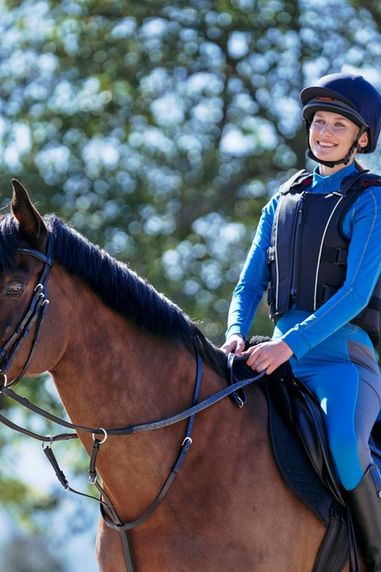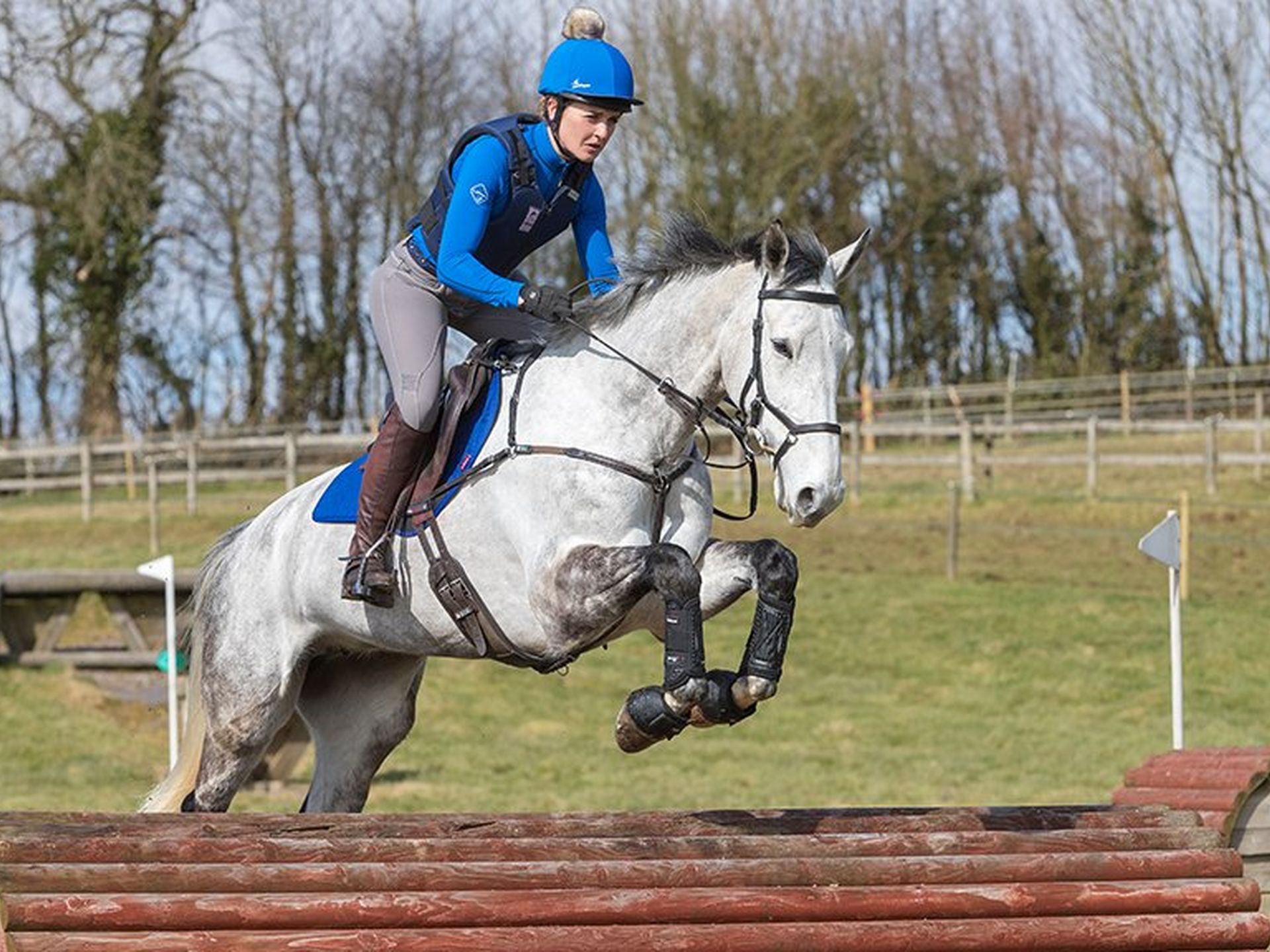
A little bit about Bits
Being one of the most important and most common pieces of tack used for the horse, choosing a bit can cause the most confusion and controversy when it comes to size and type. This is not surprising when there are many aspects you will need to consider. Not only does it depend on the horse, their conformation, behaviour and needs, you will need to take into consideration your own ability as some bits can be quite severe in the wrong hands.
This blog will talk you through what to look for in the horse before choosing a bit, the various cheek and mouthpieces, materials and pros and cons of each.
Click the link to jump straight to Which brand of bit?
As always – we advise you to check with a trained professional or trainer before changing any tack.
Fitting a bit to your horse: What you need to know

It is very important to ensure your bit fits correctly as the horses mouth and tongue is a delicate and sensitive area – any pain and discomfort can lead to negative or dangerous behaviour and can cause serious and lasting damage. Bits should be comfortable and act as a way of communication rather then a punishment.
Incorrect fitting can lead to common problems such as head shaking, refusal to perform, opening of the mouth, tongue rolling or can even be a subtle as dropping of the shoulder or picking up the wrong lead in canter. Whether it is subtle or severe, it is recommended to check all areas of the body to ensure that there is no underlying problems such as back problems or lameness.
Fitting of a bit all depends on your horse – If you are unsure, get a trainer or professional to help you.
Mouth and Teeth:
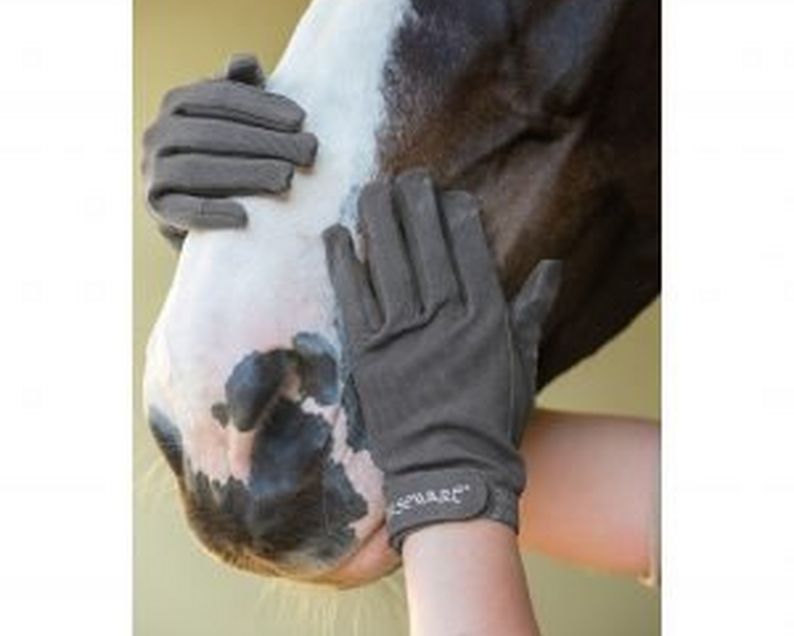
It is important to check if the mouth and teeth are all in good condition. If the mouth is sore or the teeth sharp then anything placed in the mouth will cause further discomfort. Ensure that the teeth are regularly checked by a qualified dentist and ensure there is no abrasions, bruises or sores in the mouth, or on the tongue or bars which will cause the horse to reject the bit.
Mouth Conformation:
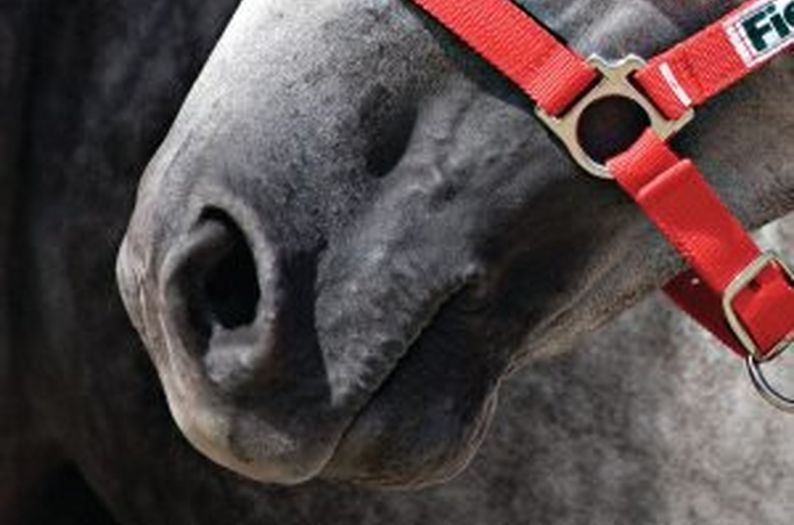
The mouth conformation is extremely important when choosing a bit. Certain breeds such as natives, cobs and warmbloods could have fleshy lips and large tongues, therefore thick bits are not recommended in this case. Similarly, Arabs and Thoroughbreds have the potential to have low palettes and small mouths therefore bits that are single jointed will cause more discomfort as the nutcracker action may cause too much pressure on the roof of the mouth.
When taking a look at your horse – take note of their conformation:
- Do they have fleshy lips?
- Does the tongue bulge against the teeth (indicating a large tongue)?
- Do the lips wrinkle easily?
- Do they have a small mouth?
- How much space do they have between the tongue and the roof of the mouth? (Find this out by resting a finger on the bars inside the mouth and crook your finger as if you were the mouthpiece of a bit.)
Bit Fitting:
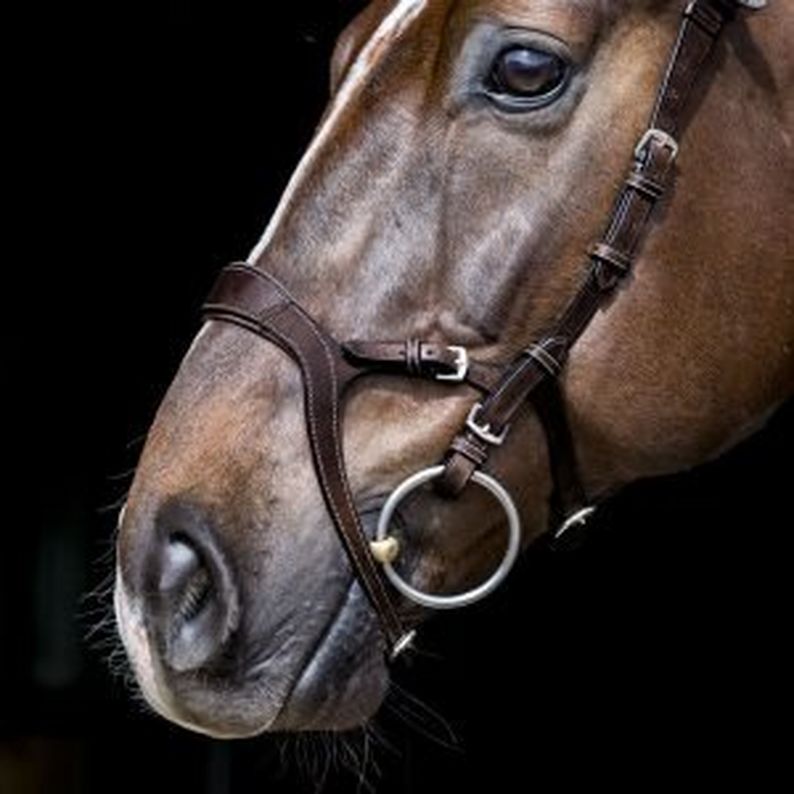
The bit needs to be long enough to prevent the cheekpieces from rubbing or pinching the face however the bit should not be too long that it can slide from side to side.
It is also important that the bit rests in the correct place in the mouth. As a general guide, the bit should have 1 or 1 1/2 wrinkles at the corner of the mouth without pulling them into a false grin or having it too low so the horse can get their tongue over the bit.
To correctly calculate the size of your bit simply tie a knot at one end of a piece of rope or bailing twine and place it into the horses mouth, mark the other side and measure accordingly alternatively if you know your current bit already fits you can measure that instead.
Choosing a bit - the types:

With a massive array of bit choices, this blog will go through the most common found on the market. We will discuss what they are, why they are used and what sort of horses the style may suit, if you wish to explore our massive range and discover other styles feel free to click the link below and browse our bit range.
Cheekpieces:
Loose Ring:
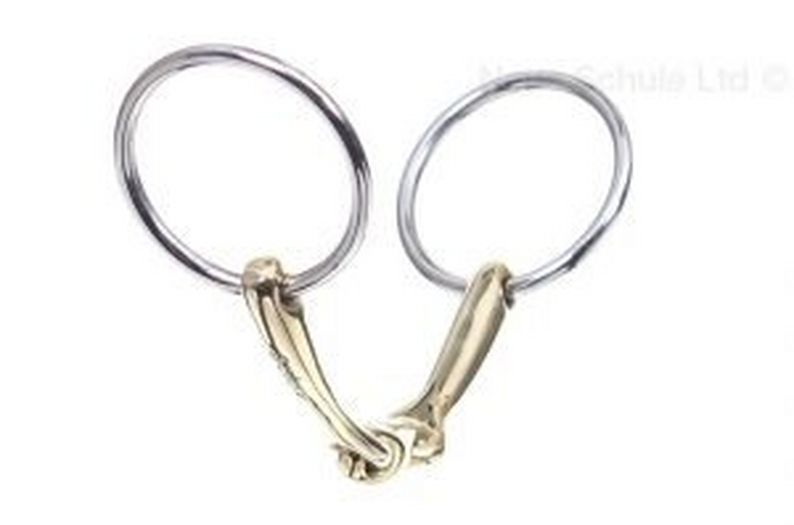
Neue Schule Tranz Angled Lozenge 14mm Mouth 55mm Loose Ring RRP: £81.75
The loose ring is a popular choice when it comes to bits. The ring is not fixed and is allowed to move freely, giving more movement in the mouthpiece allowing it to follow the movement of the tongue and reduces the pressure given. The rings can come in different sizes – the larger the ring the less inclined the bit is to be pulled through the mouth however the smaller ring sizes are more commonly seen on double bridles.
This type of bit can be used at any level however it is best suited for horses who are more established with riding into the contact and are less sensitive or fussy in the mouth as the movement of the rings could cause a distraction or be uncomfortable.
This type of cheekpiece helps to discourage any fixing, blocking or leaning on the bit as the horse will have no traction and may also be suitable for stronger horses as it can give a bit more control. This bit can encourage mouthing and is legal for use in dressage however due to the movement of the rings – rein contact may not be as direct.
Eggbutt:
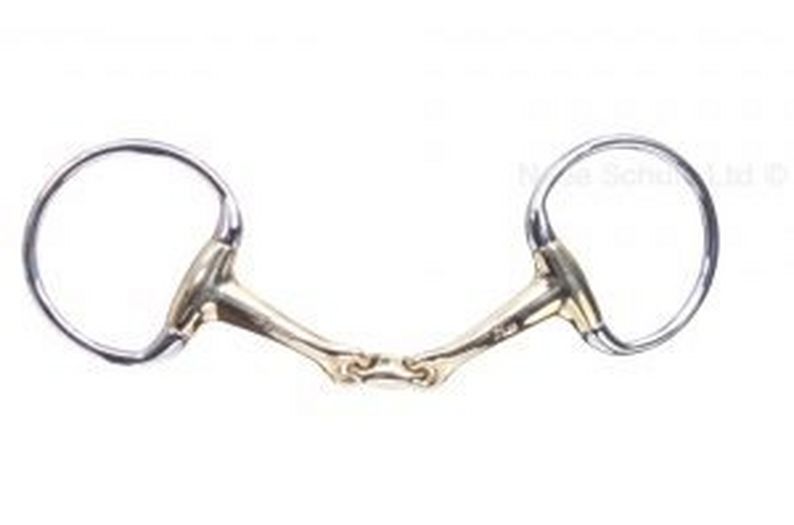
Neue Schule Tranz Angled Lozenge Eggbutt 14mm RRP: £121.75
Is the Eggbutt Bit for you?
The perfect all purpose bit. Used by novices and professionals alike, the Eggbutt is a fixed cheek piece which helps the bit remain still and stable within the mouth. The Eggbutt cheekpieces work on the bars of the mouth to aid in turning and encourage the horse to stretch forwards and down into a contact.
The Eggbutt cheekpieces are ideal for a number of horses, for those that are just starting out or young horses that are being taught the basics of turning, those that play with the bit too much, horses in the lower levels of dressage, sensitive mouthed horses or for horses who many have protruding lips as the shape prevents pinching.
Despite this however, horses may lean on the bit due to its fixed nature meaning you would have less control. It may also be more uncomfortable for horses with large tongues or low palettes as Eggbutts tend to be thicker in size.
Loose Ring Bits start from RRP 8.99. Click the link below to view our full range:
Hanging Cheek (Baucher):

Neue Schule Tranz Angled Lozenge Baucher 16mm RRP £121.75
What is a Hanging Cheek Bit and do you need one?
The Hanging Cheek works on creating pressure in the poll and allowing the horse to fall into a more natural outline. It is a widely discussed issue on whether the hanging cheek provides any poll pressure at all as when contact is taken up the cheekpieces will bow and relax.
The Hanging Cheek is designed in such a way that when the contact is picked up, the bit is suspended in the horses mouth which in turn reduces the pressure across the tongue and bars making it excellent for overly sensitive horses. The Hanging Cheek can be the best of both worlds as it creates more stability then the loose ring yet more breaking power then the Eggbutt.
Not only is the Hanging Cheek good for sensitive horses, but the small amount of pressure makes the Hanging Cheek good for horses that have a high head carriage, limited movement in the mouth, or for those that are unstable in the contact and don't like a lot of tongue pressure. However, due to the pressure in the poll, the Hanging Cheek will not be suitable for those that have a tendency to over bend and tuck behind the vertical.
Hanging Cheek Bits start from RRP 18.99. Click the link below to view our full range:
Full Cheek (Fulmer):
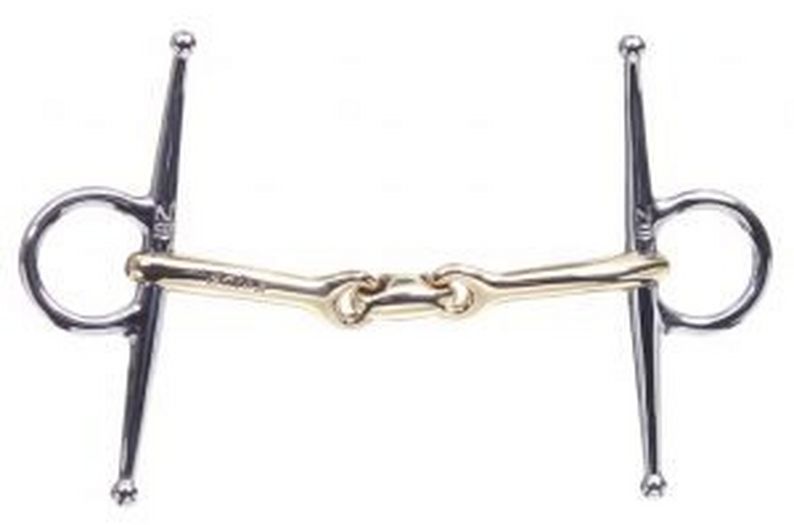
Neue Schule Tranz Angled Lozenge Full Cheek 16mm RRP £121.50
The Full Cheek is said to be an extreme type of corrective cheekpiece as it helps encourage turning. The long bars creates lateral pressure on the horses mouth and the side of the head whilst the bars prevent the bit from sliding through the mouth.
This cheekpiece is ideal for horses that are starting out or for those that are having difficulty learning what rein pressure may mean, or for those that avoid the contact by opening their mouths as the long bars prevent the bit from moving from side to side. The pressure exerted when turning will be ideal for people who wish to communicate lateral cues in sports such as driving, side saddle or para equestrianism.
Due to the long sides, there is a common occurrence of the bit becoming tangled in the reins or mouth and nostrils. Care should be taken when using this cheekpiece to ensure the horse does not get themselves caught on various objects. Fulmer Keepers can be used to ensure the bit remains in a fixed position and away from the lips and nostrils.
Full Cheek Bits start from RRP 20.99. Click the link below to view our full range:
Gag:
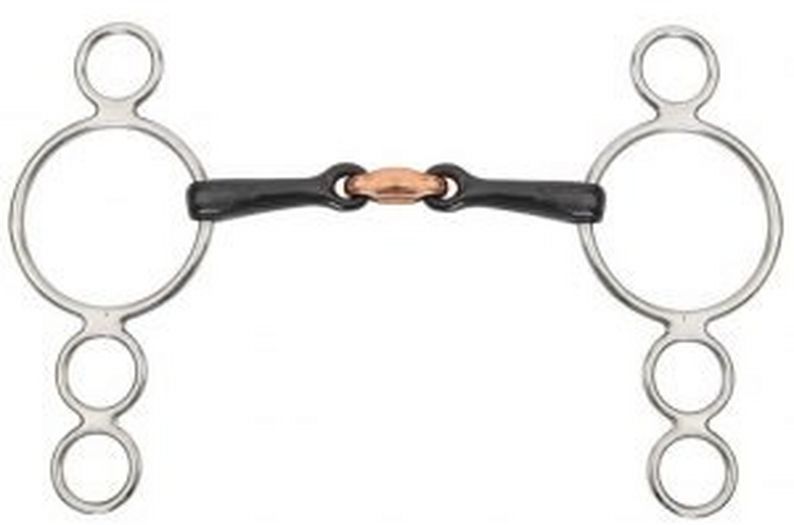
Shires Copper Lozenge Sweet Iron Three Ring Dutch Gag RRP £22.99
You may ask "Do I need a Gag Bit?" Well read below to find out!
There's a variety of styles when it comes to the Gag from the Gag Snaffle to the Dutch Gag but no matter the style, the Gag is designed to give an upward lifting movement helping to lift the head and forehand and gives the rider more control. The Gag is typically ridden in roundings or two reins, and the lower down the reins are attached, the more the pressure on the poll and lips increases which encourages more control.
The Gag bit is an effective bit but not overly severe however this depends on the mouthpiece. This style of cheekpiece is ideal for horses that tend to bear down on the bit and become strong when in excitable situations. You will find these cheekpieces in fast paced sports such as eventing, polo and showjumping however they are not permitting in dressage.
Gag Bits start from RRP 19.99. Click the link below to view our full range:
Mouthpieces:
Whats the difference between Single Joints and Double Jointed bits? Keep reading to find out the right choice for you and your horse!
No Joints:

Shires Flexible Rubber Mouth Snaffle RRP £10.99
Bits with no joints are often referred to as a Mullen mouthpiece where the mouthpiece consists of a slightly curved bar. It is known as a kind mouthpiece as it allows for pressure to the spread throughout the mouth and provides relief to the bars, inner cheeks and teeth with minimal pressure to the palate and the tongue.
This mouthpiece is ideal for horses that have smaller mouths or for those that are quite soft in the mouth and not keen on complicated mouth pieces, or for those that tend to back away from the contact and need a bit of confidence in the bit.
Due to the stability of the Mullen mouthpiece, it is not good for horses that like to take hold or lean on the bit. The Mullen mouthpiece can also be quite chunky in diameter, which makes it uncomfortable for horses with larger tongues.
Single Jointed:

Sprenger TURNADO Loose Ring Snaffle 16mm Mouth 70mm Ring RRP £96.00
Single jointed bits are a very common mouthpiece and can be found in bits such as the snaffle. A single jointed bit acts on the bars of the mouth and allows for more pressure to be placed on one side of the mouth then the other making it ideal having control over the lateral flexion of the horse.
Whilst in the correct hands, the Single Jointed mouthpiece is a mild bit, however the single joint can cause a nutcracker action when rein pressure is applied which can pinch the tongue and trap the cheek between the bit and the teeth and cause discomfort. This means that horses such as warmbloods or cobs who are known for having large tongues are not suitable for a single jointed bit as it could cause too much pressure. The same effect can happen with horses will a low palette such as Arabs or Thoroughbreds.
Double Jointed:
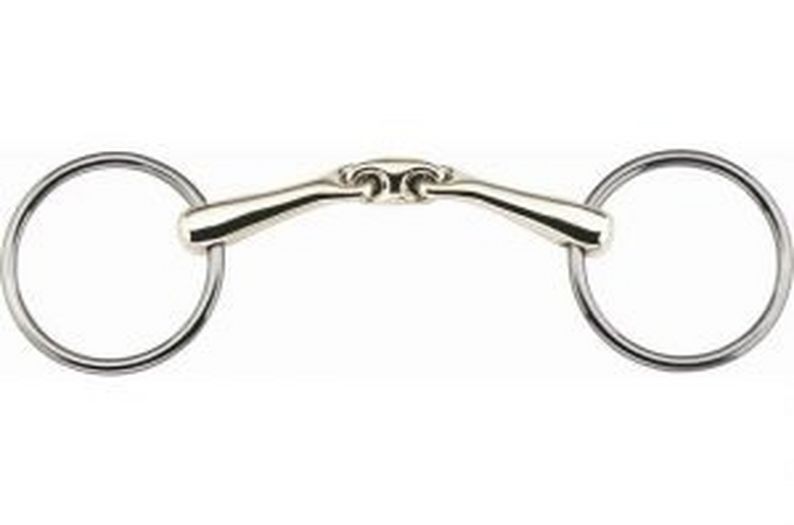
Sprenger KK ULTRA Loose Ring Snaffle 14mm Mouth 70mm Ring RRP £122.00
The Double Jointed mouthpiece is as the name describes – two joints rather then one. Two joints ensures that the nutcracker action doesn't happen and takes away a lot of pressure from the sides of the tongue, bars and cheeks as it provides a stable, centralised and constant connection.
There are a variety of different types of double jointed mouthpieces but the majority tend to relive pressure from the bars and palette and focus on the tongue. A few examples of Double Jointed Bits would be Rollers or Bead Lozenges and French Links.
Rollers and Bead Lozenges creates a gentle centralised stimulation on the tongue and encourages salivation and acceptance of the bit. This allows them to soften their top line and focus on the beads movement. The French Link is a metal rectangle which creates more of a pin point pressure on the tongue whilst reducing pressure in the corners of the mouth and the bars and a good choice for those with a low palette however horses with larger tongues may not be comfortable with the French Link due to the close contact of the bit.
Thickness of bit:
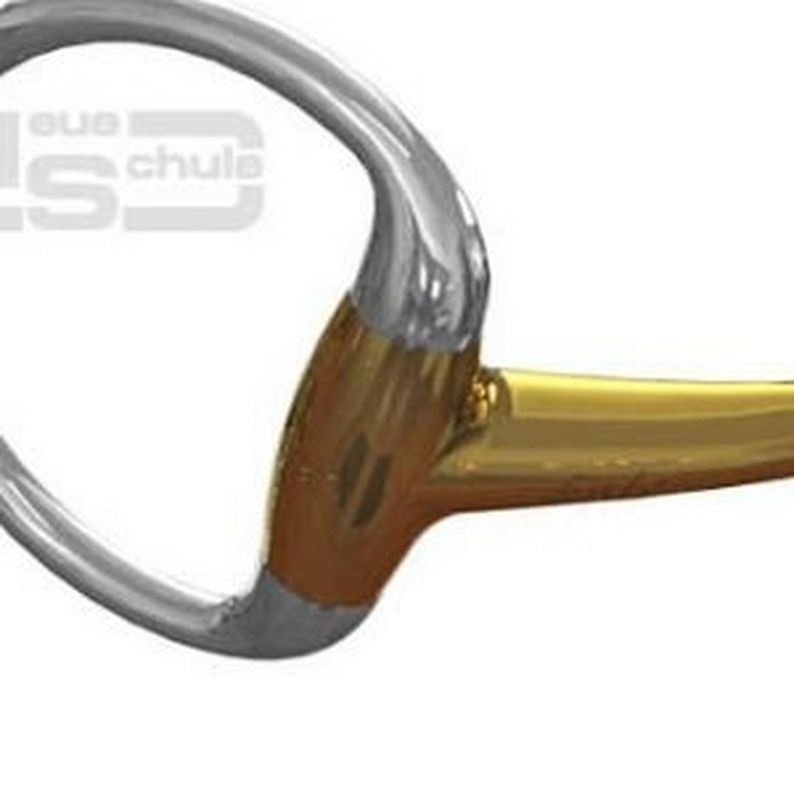
The thickness of the bit can also be a massive factor in the fit for the horse and it all depends on the horses anatomy and way of going.
A horse that is uncomfortable with the thickness of the bit may not be able to swallow or close his mouth properly as you may find behaviours such as tension in the jaw and neck, putting the tongue over the bit, opening of the mouth, inconsistency with the contact or constant messing or non-acceptance with the bit or contact.
The thickness can be measured by the diameter of the mouthpiece and is usually measured in millimetres.
Thin Mouthpieces (10mm, 12mm, 14mm):
The size of the thinner mouthpieces makes it ideal for ponies or for horses that do not have a lot of room in mouth due to fleshy lips, large tongues or a low pallets. Alternatively, thinner bits lie over a smaller surface area of the tongue allowing them to give more intense pressure in response to a rein aid. This is ideal for horses that have become a little dull in the mouth to get a more responsive ride.
Thicker Mouthpieces (16mm, 18mm, 21mm):
It is always thought that thicker mouthpieces are the kindest. While this is true in one aspect, it all depends on your horses mouth. The thicker the mouthpiece the more weight is spread across a wider surface area with the average size being 16mm. This is usually the standard to go with however horses with large tongues, small mouths and low pallets will find a large bit extremely uncomfortable as they will not be able to close their mouths or swallow.
Bit Materials:-
Stainless Steel:-
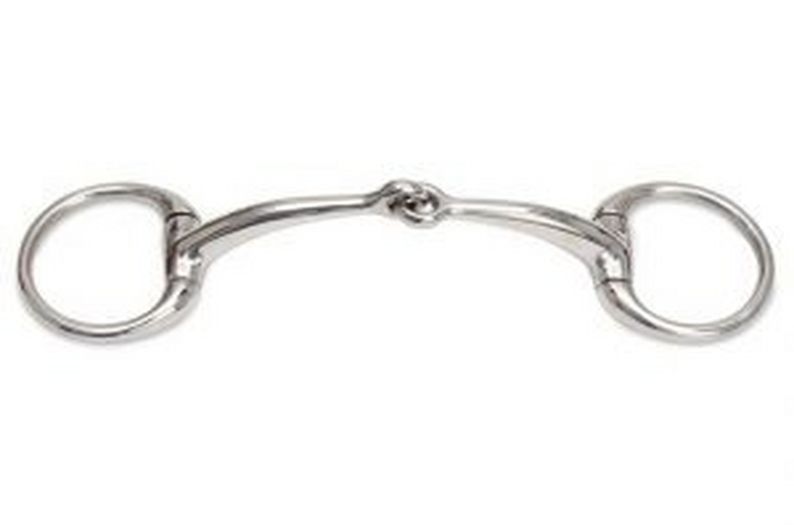
Shires Small Ring Curved Eggbutt Snaffle RRP £14.99
Stainless steel is one of the most common materials you will find in bits. A very popular and cheap material, stainless steel is durable so it is less likely to become damaged or scratched which could potentially damage the horses mouth. It does not rust however it is a cold metal and does not warm up quickly in the horses mouth which sensitive horses may dislike. This bit also does not encourage salivation which may be ideal for horses whom readily salivate however horses with dry mouths will find this uncomfortable.
Copper/Brass:
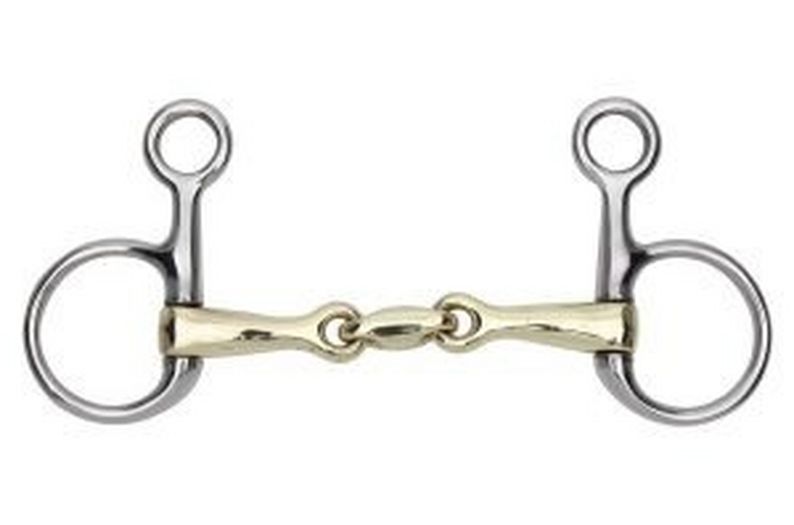
Shires Brass Alloy Hanging Cheek Snaffle RRP: £25.99
Another popular choice, Copper is the go too metal for horses that have dry mouths to encourage salivation or for younger or untrained horses to except the bit more readily. Copper delivers a sweet taste and can also be warmer in the mouth then Stainless Steel however it is quite a soft metal. Horses that tend to chew or take hold of the bit may dent or misshapen the metal which can cause it too become uncomfortable in the horses mouth.
Brass Bits combat this problem by alloying brass with copper to produce a stronger more durable bit whilst still delivering the same sweet taste horses tend to enjoy.
Sweet Iron:-
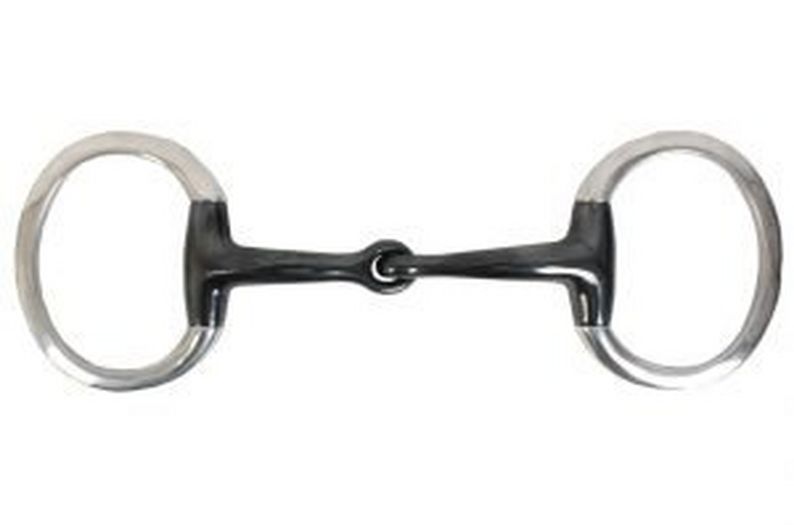
Korsteel Sweet Iron Eggbutt Snaffle RRP £19.99
Similar to the copper, Sweet Iron gives a sweet taste that horses seem to enjoy which encourages salivation . Ideal for horses that are not accepting of the bit or for youngsters, Sweet Iron oxidises and tends to leave rust on the bit which can be unfavourable to look at however it causes no harm to the horse.
Plastic/Rubber:
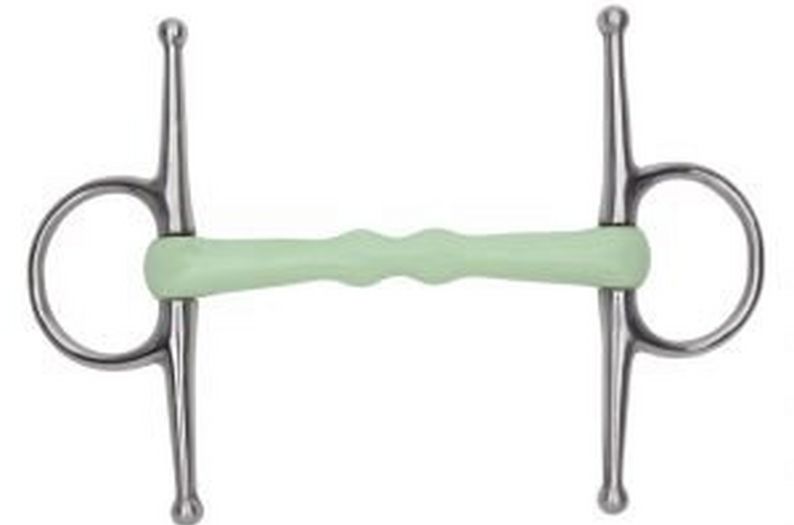
Shires EquiKind Mullen Mouth Full Cheek Snaffle RRP £25.99
Plastic and Rubber is one of the softer options when it comes to bit materials. Designed for those that do not like the hardness of a metal bit, plastic and rubber are usually soft and flexible and warm to the horses mouth which makes them more excepting. Some are even scented like apple to entice the horse further into excepting the bit.
These bits however can be quite thick due to there external coating, making them uncomfortable for horses that do not have much room in their mouths. Due to the soft material, these bits also have a relatively short life span and horses that tend to chew or take hold of the bit may cause dents and cuts in the material which can cause damage to the horses mouth.
Double Bridles:
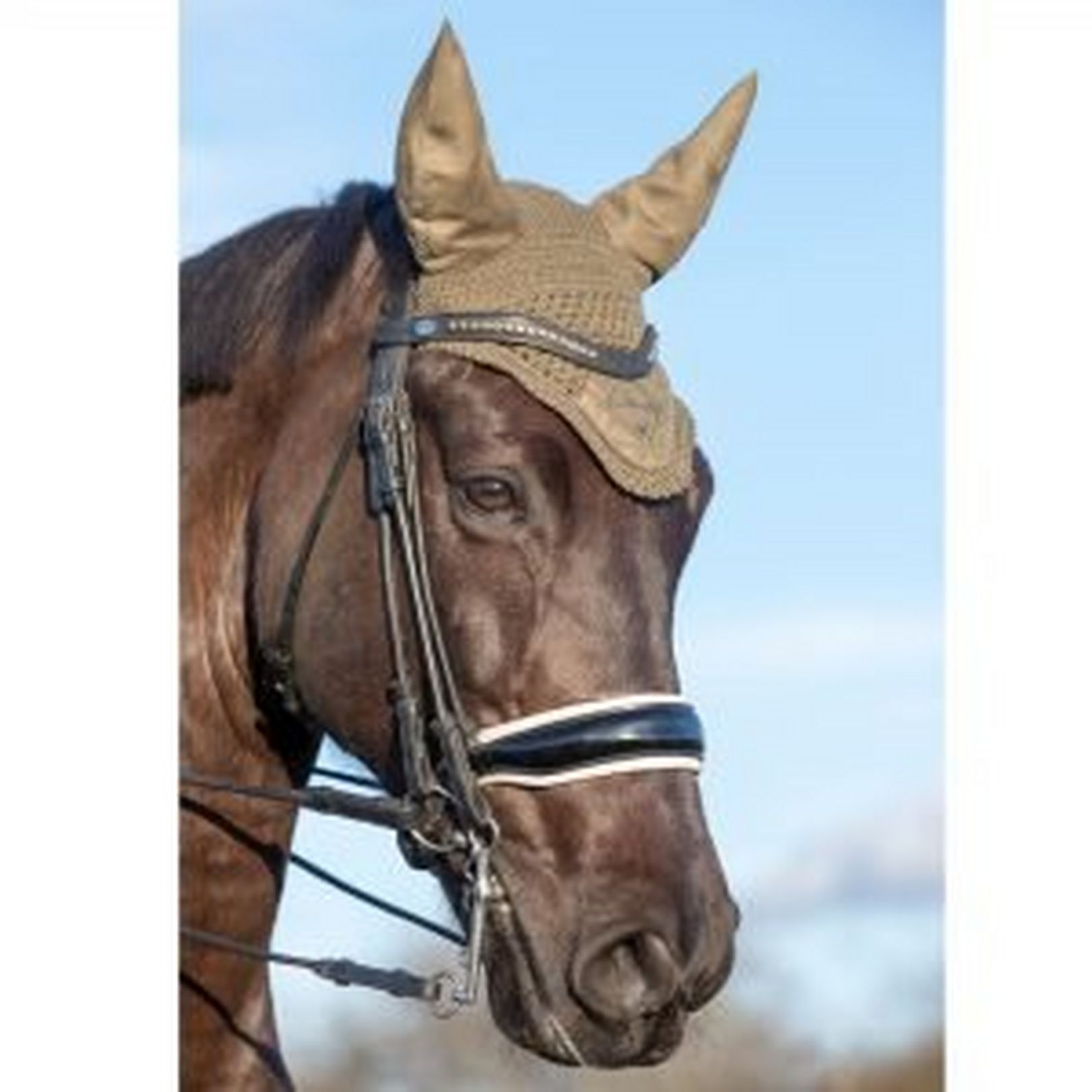
When showing or in the dressage ring, it may be compulsory to use a double bridle. But where do you start?

Shires Port Weymouth Set RRP £35.99
As the name suggests, double bridles uses two bits rather then one with the use of a Weymouth (or curb) bit and a bradoon (or sometimes a snaffle). It is important that the horse can go correctly in a standard bridle and that you are skilled enough to ride with double reins.
The conformation of the horses mouth is one of the most vital parts you should look at. Horses with small mouths may be extremely difficult to fit two bits in their mouths while those with large tongues may need a different style of Weymouth such as a bit with a higher port to give the tongue more room.
The horses way of going can help determining what kind of cheekpieces you would need. For horses that like to lean, a sliding cheek would be adventurous whilst a fixed cheek would be better for horses that a lighter in the hand or tend to over bend. The length of bit would depend on how much leverage you would need. The longer the shank – the more leverage you would have.
Pelham Bits:
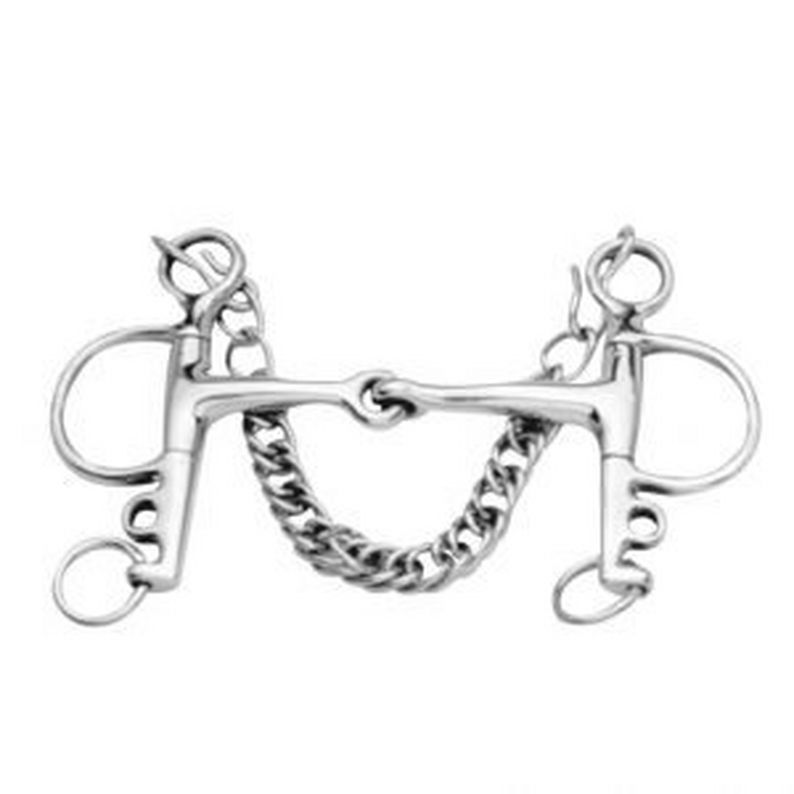
Korsteel Eggbutt Pelham RRP £27.99
A Pelham Bit works in a similar fashion to a Double bridle however it may be suited towards horses who dislike two bits or those with smaller mouths. The Pelhem can be considered a harsh bit and can be ridden with two reins or with roundings and comes in a variety of styles such as long shanks to short shanks or a Mullen mouthpiece to various jointed mouthpieces.
Pelham Bits start from RRP 27.99. Click the link below to view our full range:
There are so many options, choosing a bit for your horse can be difficult. We hope this guide sheds light on the different types and styles you may come across and hopefully answer the dreaded question: “Which bit for my horse?”
Have a browse of what we have to offer online or come and test them out yourselves by coming into store. If you have any questions feel free to ring our customer service team on 01706 507555 or write your comments below and we'll do our best to answer your questions.



